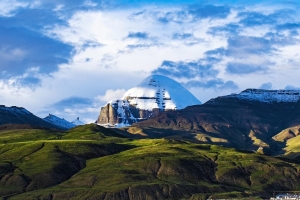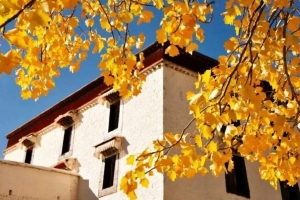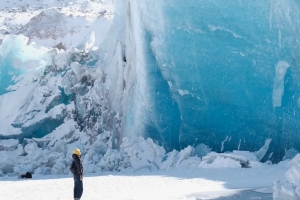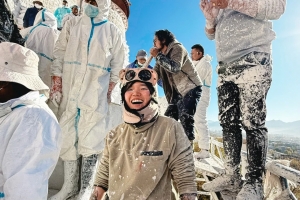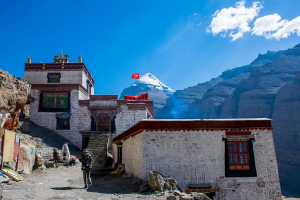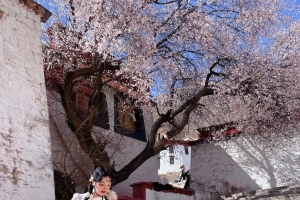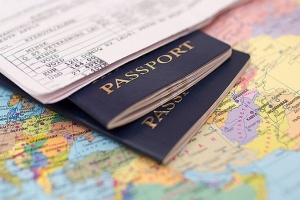Meditation is a transformative practice that helps dissolve stress, cultivate inner calm, and tap into the vast potential of the mind. When paired with a journey across Tibet’s soaring plateaus and sacred landscapes, meditation becomes an even more profound experience. The crisp air, endless skies, and millennia-old monasteries offer the perfect backdrop for mindfulness and spiritual renewal. Below, we introduce the Top 10 Meditation Retreats in Tibet, each chosen for its unique combination of natural beauty, historical significance, and conducive environment for meditation. Whether you seek seclusion in high-altitude caves or peaceful lakeside contemplation, these destinations promise an unforgettable path toward inner peace.
1. Drak Yerpa Meditation Caves
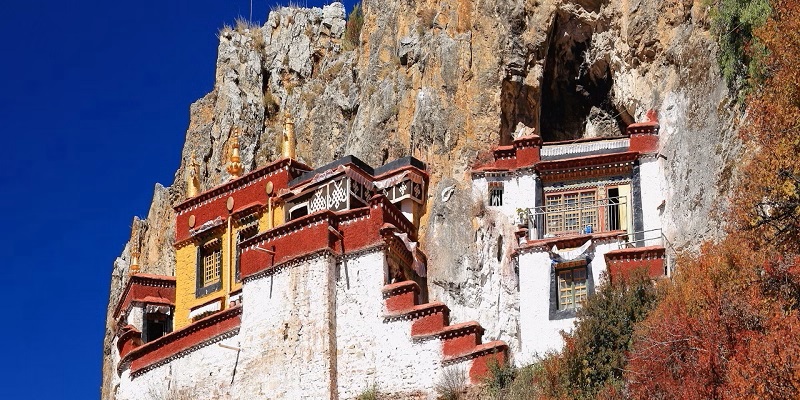
Location: 20 km northeast of Lhasa, Dazi County
Altitude: ~3,700 m
Nestled on a windswept hill overlooking Lhasa, Drak Yerpa is one of Tibet’s oldest and most venerated meditation sites. Dating back to the 7th century, this complex comprises natural rock caves where revered figures—such as King Trisong Detsen and the great translator Atisha—undertook intensive retreats. Pine and cypress forests surround the hillside, while clear springs trickle through moss-covered stones. Visitors can wander through the caves, pause at the local shrine, and experience the same silent corridors that have supported countless yogis over fifteen centuries.
Highlights for Meditation:
- Dharma and Moon Caves: Ancient hermitages carved into sheer rock faces.
- Silent Pathways: Wandering the forest trails at dawn offers profound tranquility.
- Panoramic Views: Look out over the Lhasa Valley as you sit in stillness.
2. Pabonka Hermitage

Location: 7 km north of central Lhasa
Altitude: ~3,650 m
Perched on a rocky outcrop adjacent to the Sera Monastery hills, Pabonka is a less-traveled retreat offering sweeping views of the Potala Palace and the Lhasa River. Legend holds that Princess Wencheng and Padmasambhava practiced here before their union, and the site houses the original stele inscribed with the six-syllabled mantra “Om Mani Padme Hum.” Fewer tourists venture to Pabonka, making it an ideal spot for uninterrupted meditation sessions amidst fluttering prayer flags and grazing yak.
Highlights for Meditation:
- Six-Syllable Mantra Stele: A powerful focal point for mantra recitation.
- Sunset Over Potala: Engage in evening meditation as golden light bathes the valley.
- Quiet Hermitages: Small rock chapels ideal for solo retreats.
3. Namtso Lake Retreat
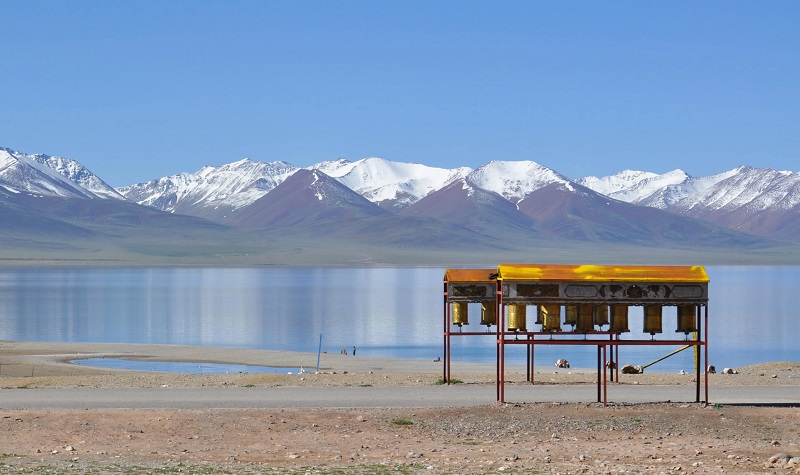
Location: Central Tibet Autonomous Region
Altitude: 4,718 m
Namtso—“Heavenly Lake”—is celebrated as one of Tibet’s three holy lakes and captivates visitors with its crystalline blue waters set against rolling grasslands. The high-altitude shores provide an expansive, almost surreal setting for meditative practice. The clean, invigorating air and gentle waves lapping against the shore facilitate deep breathing exercises and silent reflection, while seasonal flocks of migratory birds add a lyrical soundtrack to contemplation.
Highlights for Meditation:
- Lakeside Silence: Open horizons to deepen mindfulness of breath and body.
- Pilgrim’s Vows: Join local devotees walking the kora (circumambulation) path around the lake.
- Starlit Reflections: Nighttime sitting yields vivid reflections of the Milky Way on water.
4. Samye Monastery Mandala Grounds
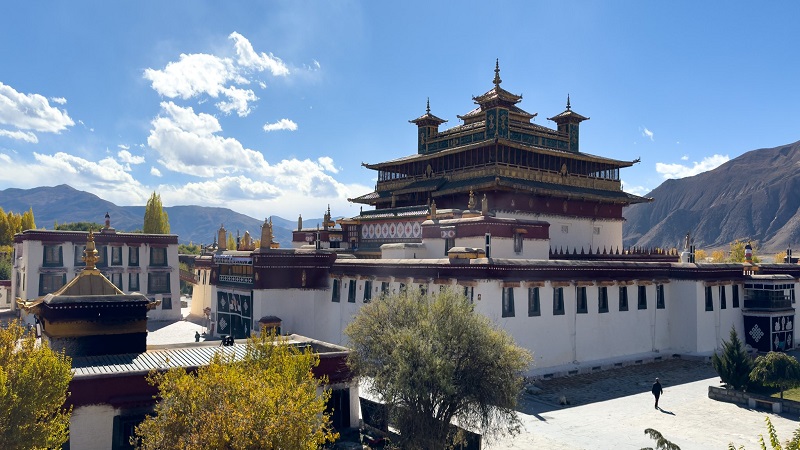
Location: North bank of the Yarlung Tsangpo River, Shannan Prefecture
Altitude: 3,550 m
Established in the 8th century as Tibet’s first Buddhist monastery, Samye’s layout embodies a three-dimensional mandala. The central Utse Hall symbolizes Mount Sumeru, while four surrounding temples and numerous pagodas reflect the universe’s cardinal points. Meditating here allows practitioners to physically situate themselves within the sacred geometry of Vajrayana Buddhism. Hikes to nearby hills offer bird’s-eye views of the entire complex, reinforcing the visual and spiritual symmetry.
Highlights for Meditation:
- Mandala Contemplation: Engage in guided visualization using the monastery’s layout.
- Hilltop Overlooks: Silent sunrise sittings above the temple rooftops.
- Ritual Offerings: Participate in traditional lighting of butter lamps.
5. Chim-puk Valley Seclusion
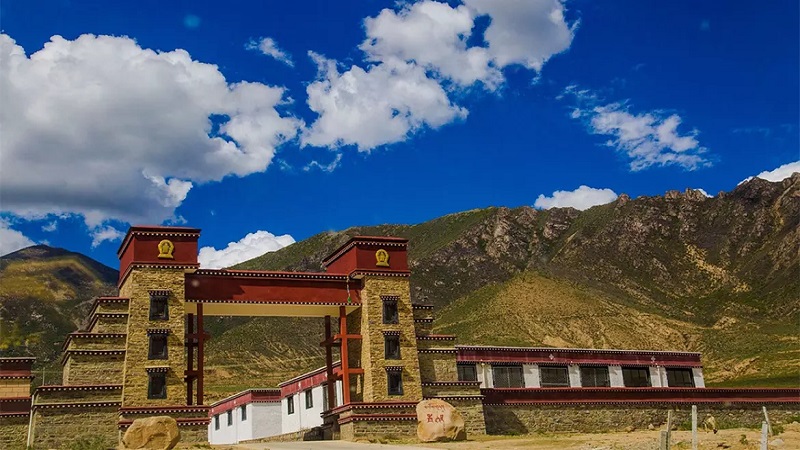
Location: 15 miles northeast of Samye Monastery
Altitude: ~4,300 m
Hidden within the rugged folds of Hapori Mountain, Chim-puk Valley remains a spiritual refuge coveted by seasoned practitioners. The valley’s mild climate, despite its altitude, nurtures groves of juniper and delicate mountain flowers. Streams weave through rock formations, and a handful of small caves mark the spots where luminaries like Padmasambhava completed retreats. This deep-forest setting is perfect for multi-day silent meditations, where the only interruptions are natural sounds and the occasional prayer flag flutter.
Highlights for Meditation:
- Waterside Retreats: Set up a mat beside a flowing brook for continuous mindfulness practice.
- Historical Caves: Sit in the same niches where ancient masters contemplated.
- Forest Bathing: Combine nature immersion with breathing exercises.
6. Tashilhunpo Monastery Mindfulness Zone
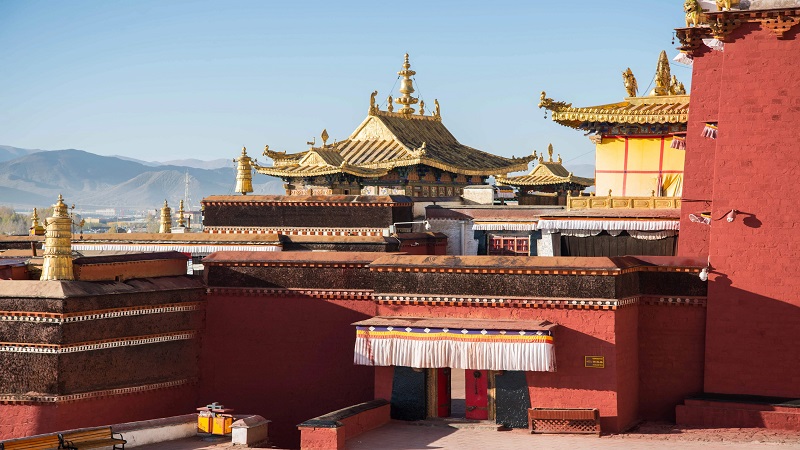
Location: Shigatse City
Altitude: ~3,800 m
As the seat of the Panchen Lamas, Tashilhunpo Monastery exudes an aura of scholastic devotion and silent discipline. The terraced halls on its hillside setting foster a layered sense of calm, while the temple’s rear slopes feature a secluded grove where monks often retreat for solitary practice. Observing pilgrims performing kora around stupas offers a live lesson in unwavering focus, inspiring visitors to infuse their meditations with the same dedication.
Highlights for Meditation:
- Stupa Circumambulation: Walk slowly in mindfulness around white pagodas.
- Quiet Nordic Pine Grove: A hidden enclave behind the main complex.
- Sacred Bell Chimes: Incorporate the monastery’s hourly bells into concentration exercises.
7. Sakya Monastery Scripture Wall
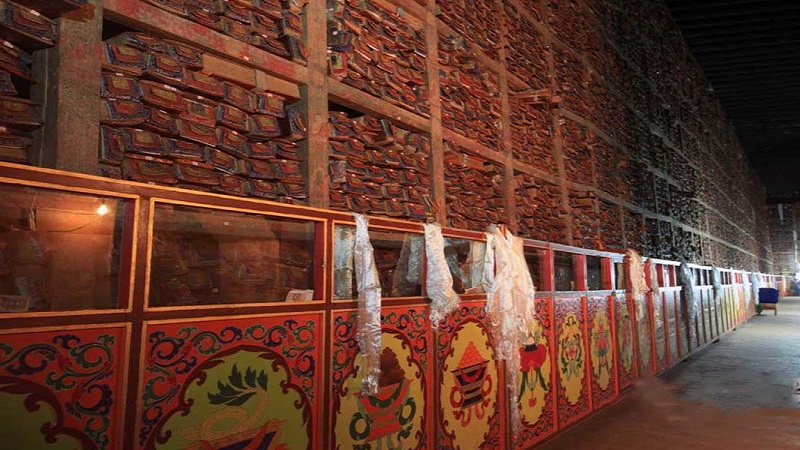
Location: 45 km from Shigatse
Altitude: ~4,100 m
The principal seat of the Sakya school, this monastery is famed for its colossal scripture wall—an expanse nine meters high and over sixty meters wide, made up of thousands of illuminated manuscripts. Meditating here allows one to reflect on the written word as an anchor for the mind. Nearby prayer halls and murals dedicated to the three principal Bodhisattvas offer additional focal points, enabling practitioners to rotate through different devotional subjects.
Highlights for Meditation:
- Scripture Gazing: Use the golden texts as a visual aid for letter-by-letter concentration.
- Mural Reflection: Contemplate the lifelike Bodhisattva images.
- Mantra Recitation: Join daily choral recitations for rhythmic immersion.
8. Rongbuk Monastery at Everest Base Camp
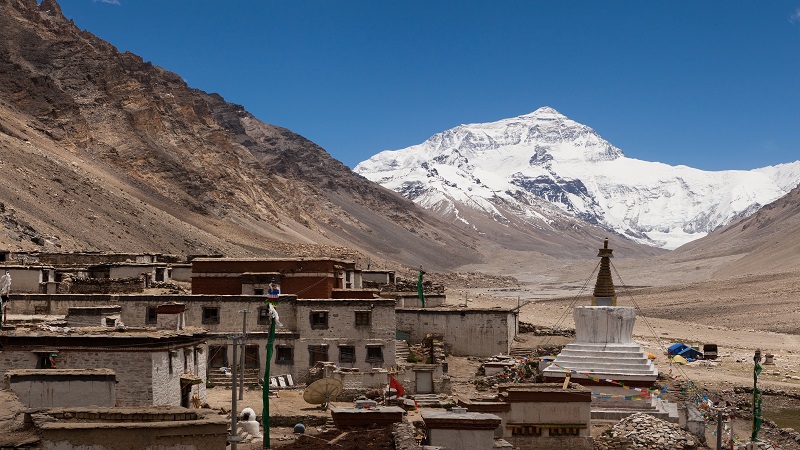
Location: 20 km north of Mount Everest’s summit
Altitude: 5,145 m
Rongbuk holds the distinction of being the world’s highest monastery, perched at the threshold of Everest Base Camp. Its sparse stone buildings, flanked by stupa fields and fluttering prayer flags, offer a stark yet sublime environment for meditation. The monastery’s proximity to the world’s highest peak inspires humility—ideal for practices centered on equanimity and open awareness. A short trek leads to a cave where Guru Padmasambhava is said to have meditated, complete with hand- and footprints preserved in stone.
Highlights for Meditation:
- High-Altitude Stillness: Develop resilience through breath-focused sittings in thin air.
- Everest Visualization: Use the mountain’s presence to support vast, open-minded awareness.
- Pilgrim’s Trail: Walk to Padmasambhava’s cave in solemn silence.
9. Mount Kailash Kora and Lake Manasarovar
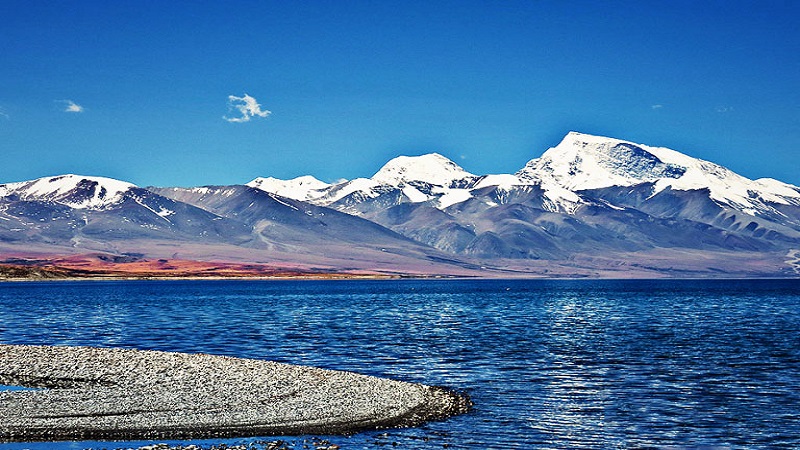
Location: Ngari Prefecture, western Tibet
Altitude: 4,588–6,638 m
Regarded as the spiritual axis mundi by multiple faiths, Mount Kailash and nearby Lake Manasarovar draw pilgrims seeking transformational experiences. Circumambulating Kailash—a 52-km kora that typically takes three days—offers a physically demanding yet meditative journey, each footstep embedded in prayer. Manasarovar’s clear waters provide a reflective setting for seated practice, while the surrounding silence amplifies one’s inner awareness.
Highlights for Meditation:
- Kailash Walking Meditation: Integrate mantra repetition with each step around the mountain.
- Lakeshore Sittings: Meditate at dawn on the banks of Manasarovar.
- Group Retreats: Join experienced lamas for extended kora guidance.
10. Pangong Tso Lakeside Contemplation
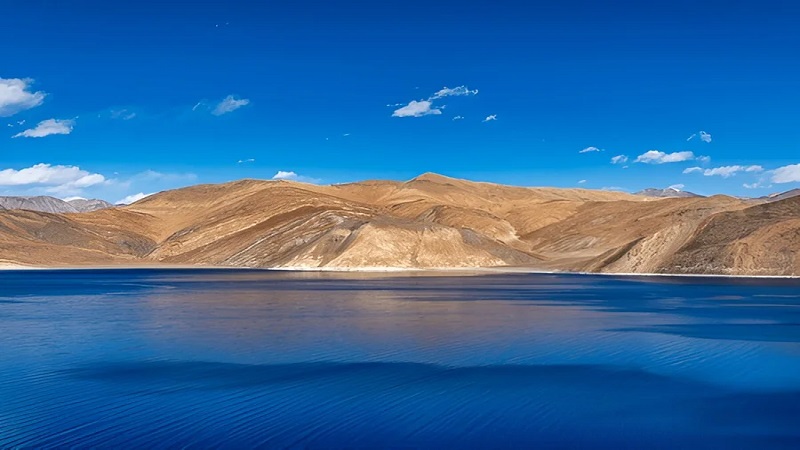
Location: Border of Ngari Prefecture and Ladakh, India
Altitude: 4,350 m
Pangong Tso’s shifting hues—from aquamarine to deep indigo—mirror the changing states of mind encountered in meditation. The encircling mountain ridges and scattered islets create a sense of protective enclosure, fostering deep introspection. At dawn, when light fractures across the water’s surface, practitioners can synchronize breath and movement with the lake’s gentle lapping, embodying the fluid nature of awareness.
Highlights for Meditation:
- Color Reflection Practices: Observe the water’s palette to stabilize mental fluctuations.
- Island Retreats: Camp on one of the lake’s small islands for a night of silent sitting.
- Birdsong Sound Meditation: Use local avian calls as an auditory anchor.
Explore Tibetan Meditation Retreats with Journey2tibet
Tibet’s vast plateaus and ancient monasteries create an unparalleled environment for meditation retreats. From the cave hermitages of Drak Yerpa to the ice-blue shores of Pangong Tso, each site offers a distinctive pathway to deepen mindfulness and awaken inner peace. Whether you seek the solitude of high-altitude caves or the geometric harmony of monastic mandalas, these Top 10 Meditation Retreats in Tibet promise a journey as expansive and transformative as the land itself.

